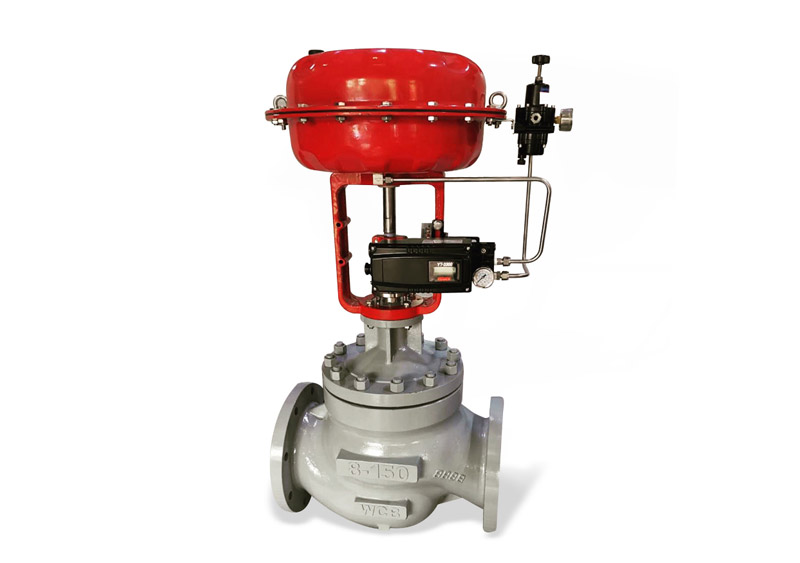How Control Valves Effect Power Effectiveness in Industrial Settings

Maximize Energy Cost Savings and Convenience With Advanced Structure Automation Controls
In the world of modern-day design and center administration, the assimilation of innovative structure automation controls stands as an essential advancement. By harnessing the power of automation, structures can adapt, react, and advance in ways that were once inconceivable.
Power Efficiency Conveniences
Energy effectiveness benefits can dramatically reduce energy intake and functional prices in structures. Energy-efficient systems, such as innovative structure automation controls, can enhance the use of resources like cooling, lighting, and heating, leading to lower energy expenses over time.
Additionally, enhanced power performance can prolong the life-span of building equipment and systems. By running much more effectively, cooling and heating systems, lighting components, and various other building elements experience much less damage, causing lowered maintenance and replacement expenses. Furthermore, energy-efficient structures commonly regulate higher residential property worths and rental rates, offering long-term monetary benefits to proprietors.
Moreover, power effectiveness can improve resident comfort and efficiency. Appropriately controlled indoor atmospheres with optimum illumination and thermal conditions create an even more enjoyable and helpful workspace, resulting in enhanced employee contentment and efficiency. Overall, the power efficiency benefits related to advanced structure automation controls are complex, encompassing expense savings, environmental stewardship, and passenger well-being.
Enhanced Comfort Control
Enhancing comfort control in structure environments requires an advanced integration of advanced automation systems for optimum passenger well-being. By utilizing advanced structure automation controls, centers can tailor the interior setting to meet the details needs and preferences of owners. These systems allow accurate law of air flow, temperature level, and lighting, producing a comfortable and efficient environment. Owner contentment and performance are very closely linked to thermal comfort, making it vital to have systems in area that can adapt to altering problems in real-time.
Boosted comfort control goes past standard temperature adjustments. It includes attributes such as customized settings, occupancy sensors, and natural light use to produce a dynamic and receptive atmosphere. By integrating these sophisticated controls, buildings can not just boost comfort but additionally boost power efficiency by optimizing system operations based on actual tenancy and usage patterns. Ultimately, focusing on owner convenience via sophisticated automation systems causes a more enjoyable and healthier interior atmosphere.
Operational Efficiency Improvements

Furthermore, the implementation of real-time surveillance and analytics tools enables structure drivers to determine power ineffectiveness and operational abnormalities quickly. By continuously keeping an eye on energy usage patterns and system efficiency metrics, changes can be made in real-time to maximize power consumption and ensure peak operational performance. control valves. In addition, including demand reaction approaches right into structure automation controls can even more enhance functional performance blog here by dynamically changing energy usage based on grid conditions and rates signals
Indoor Environment Optimization
Reliable indoor environment optimization is an essential aspect of building automation controls, making sure residents' convenience and well-being while taking full advantage of energy savings. By utilizing sophisticated sensors and controls, building automation systems can continuously check and adjust temperature level, humidity levels, air quality, and air flow to create an optimum interior atmosphere. Maintaining consistent and comfortable problems not just improves passenger satisfaction but additionally enhances performance and total health.
Interior environment optimization likewise plays a crucial role in energy efficiency. By fine-tuning heating, cooling, and ventilation systems based upon real-time information and occupancy patterns, developing automation controls can considerably decrease energy intake - control valves. As an example, executing approaches such as demand-controlled air flow and thermal zoning can assist reduce energy waste while making sure that each location of the structure receives the necessary conditioning.

Sustainable Setting Production
Structure automation regulates not only maximize indoor climate problems for power effectiveness and resident convenience however also lay the foundation for creating a sustainable atmosphere via tactical management of systems and sources. By integrating sophisticated structure automation technologies, such as sensing units, actuators, and intelligent software program, facilities can check and readjust power use in real-time to lessen waste and decrease their carbon impact. These systems enable anticipating upkeep, identifying possible problems prior to they rise and enhancing equipment performance to improve durability and performance.
Moreover, sustainable environment production expands beyond energy administration to encompass water preservation, waste reduction, and indoor air high quality enhancement. Structure automation controls can control water use, discover leakages, and ensure proper waste disposal practices, adding to general sustainability initiatives. In addition, by managing and keeping an eye on air flow and purification systems, these technologies improve owner wellness and performance while lowering power intake connected with HVAC operations.
Verdict
To conclude, progressed building automation controls deal substantial advantages in regards to power savings, comfort control, functional performance, indoor climate optimization, and producing a sustainable environment. By implementing these controls, structures can accomplish optimal performance while reducing power usage and improving owner comfort. It is apparent that using innovative automation modern technology is vital link in improving building efficiency and producing a much more lasting future.
Power performance benefits can significantly decrease power consumption and functional prices in structures. On the whole, the power efficiency advantages associated with innovative building automation controls are diverse, including price savings, environmental stewardship, and owner well-being.
Additionally, incorporating need response strategies right into structure automation controls can further improve operational effectiveness by dynamically readjusting power use based on grid conditions and prices signals.
Structure automation manages not just maximize interior climate conditions for energy effectiveness and passenger convenience however additionally lay the foundation for creating a sustainable environment via critical administration of systems and resources.In conclusion, advanced structure automation regulates deal considerable benefits in terms of energy savings, comfort control, operational efficiency, interior environment optimization, and producing a sustainable setting.